In today’s digital era, chatbots have become essential tools for businesses to enhance customer interactions and streamline operations.
But how can they truly understand what clients want?
The answer lies in chatbot intents, of course.
At the heart of every effective bot lies its understanding of intents—the specific goals and actions users seek to accomplish.
So, how to create one with these objectives in mind?
This time around, we’ll share concrete examples and tips you can use to unlock the full potential of chatbot technology.
Get ready to take your customer engagement to new heights!
Use chatbot intents to kickstart customer service automation
First things first, let’s answer the following question—
What are chatbot intents?
Chatbot intents are the specific purposes behind users’ messages or questions. They represent what people want to achieve when interacting with a chatbot. As such, intents help chatbots understand customer queries and allow the bot to provide appropriate responses or perform certain actions.
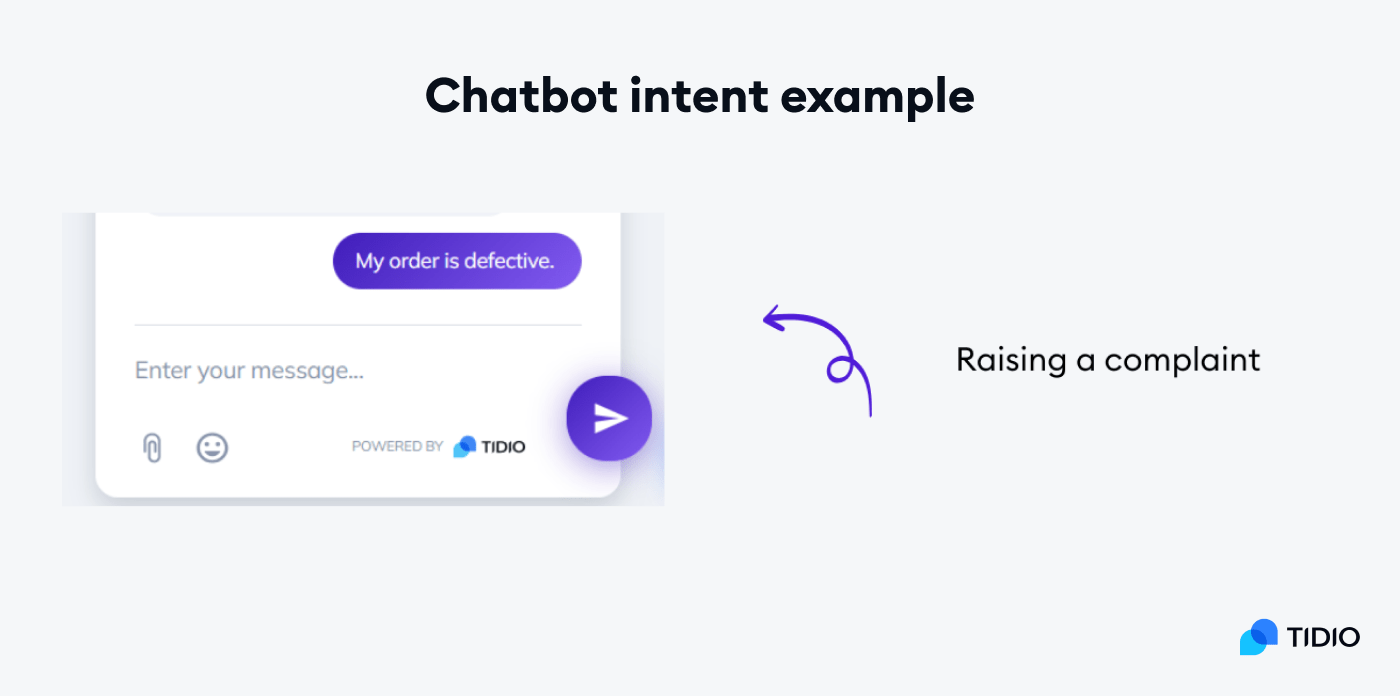
But how do they work, exactly?
By analyzing the user’s input, chatbots are able to identify the objective behind the message and give relevant replies to them. In simpler terms, intents enable bots to read between the lines and comprehend the client’s intentions, ensuring more effective, meaningful, and personalized conversations.
Types of chatbot intents
In general, chatbot intents can be categorized into various types. Each one serves a distinct purpose in client interactions, helping businesses cater to diverse customer needs and preferences.
So, let’s check out some of the most common intents out there.
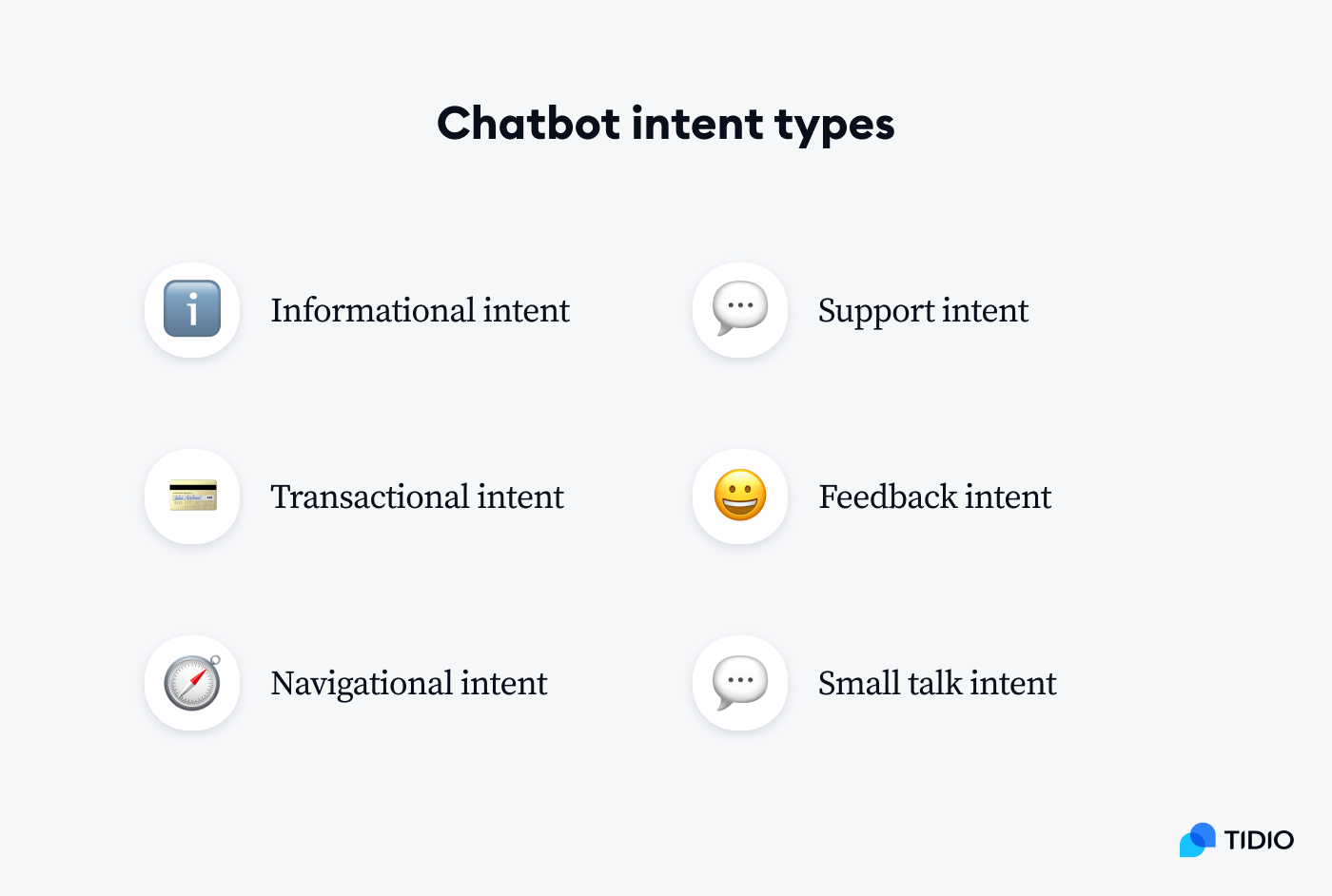
- Informational intent—users seek information or answers to their questions, such as “What are your store hours?” or “Tell me about your product features.”
- Transactional intent—client wants to perform a specific transaction or action, like making a reservation, placing an order, or scheduling an appointment
- Navigational intent—customer needs help finding their way around, such as getting directions, reaching nearby locations, or exploring website sections
- Support intent—user requires assistance with troubleshooting issues, seeking technical support, or resolving problems related to products or services
- Feedback intent—client wants to share their opinions about the chatbot’s performance, user experience, or overall satisfaction with your brand
- Small talk intent—person seeks a more casual chatbot conversation, like discussing general topics or sharing a random comment
You should note that these are just a few examples, and the range of intents can vary depending on the specific chatbot’s purpose and the industry it serves.
Read more: Learn about different chatbot types available and find out how they can help you make the most out of your business.
Okay—
Now you’ve got a better idea of what chatbot intents are and what they can be like. But what’s the role of classifying such intents?
Let’s take a more detailed look.
What is chatbot intent classification?
Simply put, chatbot intent classification is the process of training bots to understand and categorize client messages based on their intention. It involves providing data to recognize patterns and keywords in user input to identify the specific goal the potential customer wants to accomplish.
By classifying these intents, the chatbot can provide more accurate and relevant responses, helping people effectively achieve their desired outcomes. Essentially, it’s like teaching the bot to understand the “why” behind the user’s message. The end goal is to have the software respond appropriately and assist clients in a more targeted manner.
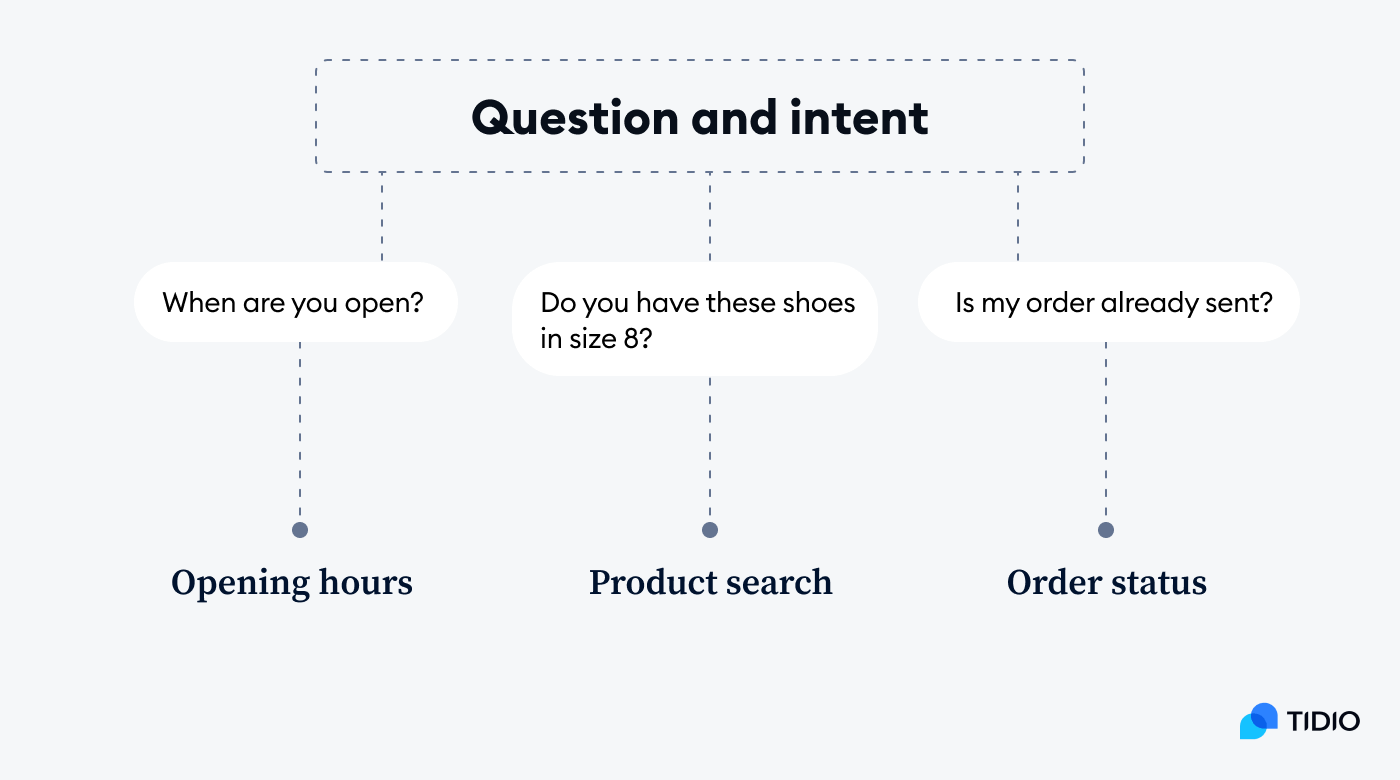
Let’s emphasize that artificial intelligence (AI) plays a crucial role in automating the classification of chatbot intents. Thanks to machine learning (ML) and natural language processing (NLP) technologies, AI models can be trained to understand and classify customer intents accurately.
Moreover, by analyzing patterns, keywords, and context within client messages, AI-powered models can automatically assign the appropriate intent category to incoming queries.
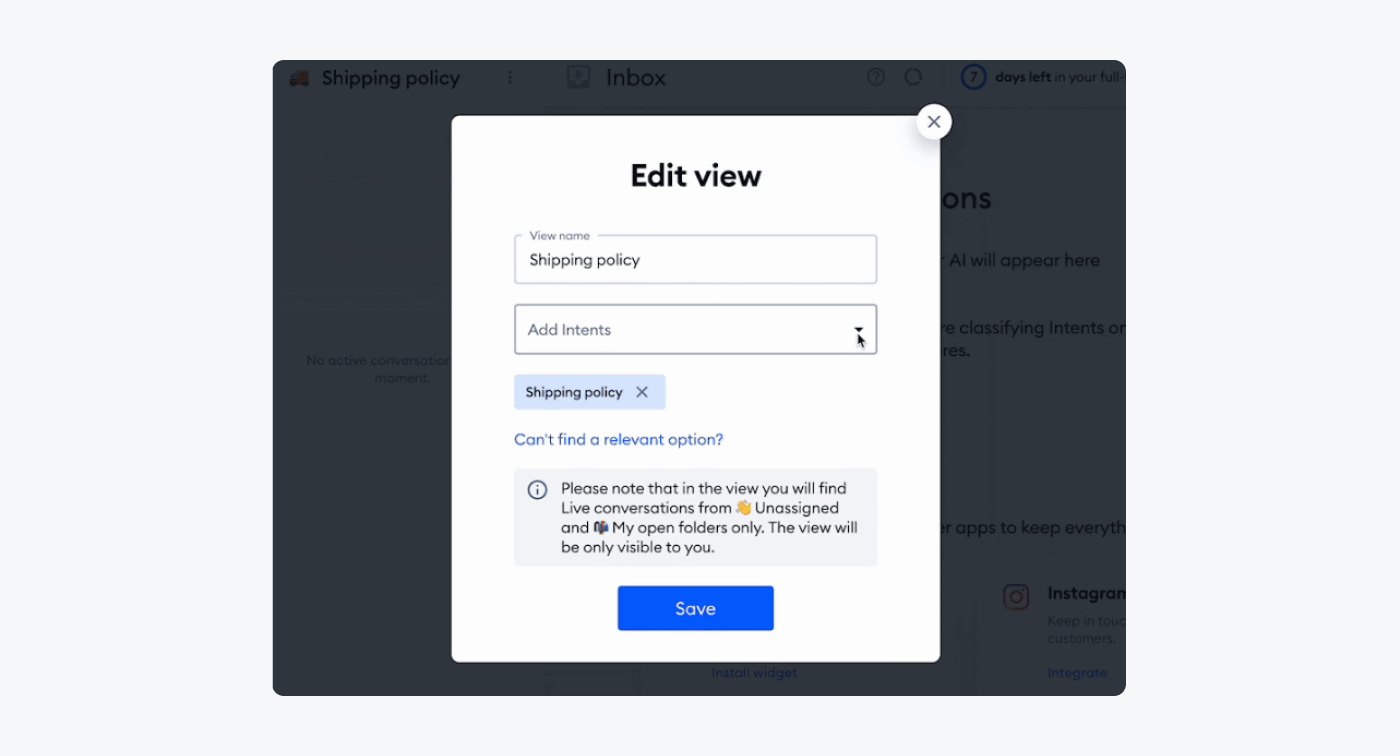
Once trained, these models can classify intents in real time, enabling chatbots to respond immediately and accurately without human intervention. This automation saves time and resources while ensuring consistent and reliable intent classification across a large volume of user interactions. Additionally, AI models can continuously learn and adapt from new data, allowing for ongoing improvement and refinement of the classification process.
Overall, leveraging AI for intent classification enables businesses to enhance the efficiency of their chatbot systems. In turn, they provide users with better experiences and free up human resources for more complex tasks.
Read more: Learn more about NLP chatbots and how to successfully train your own.
The benefits of chatbot intent classification
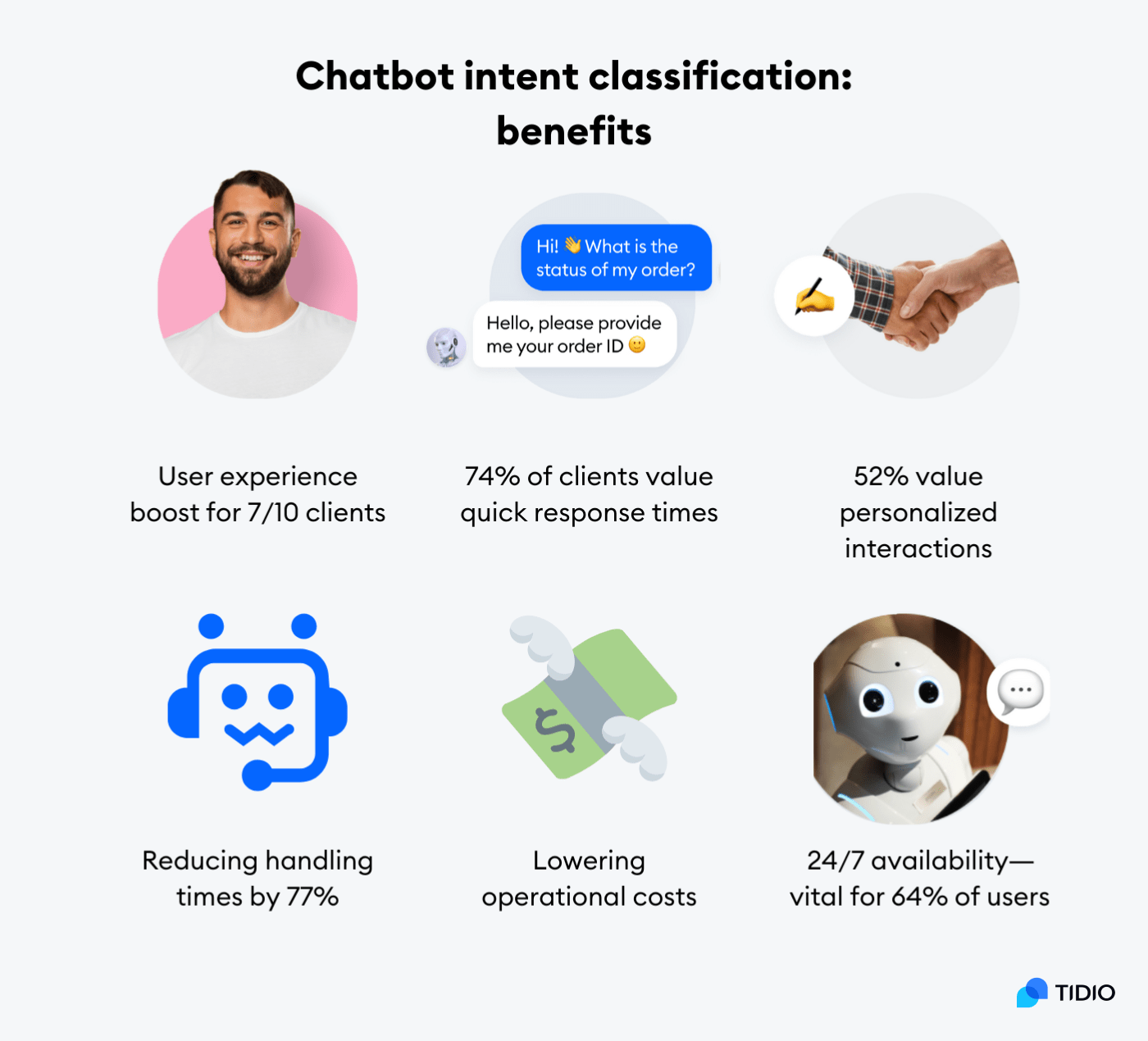
- Improved user experience
According to our own chatbot statistics, a whopping 88% of clients talked to bots in 2022, with 7 out of 10 rating the interaction as positive. By accurately classifying intents, chatbots can provide more relevant and helpful responses, leading to a better user experience.
- Faster response times
As many as 74% of customers prefer to use chatbots when looking for answers to simple questions. Intent classification is great as it helps bots quickly identify the purpose of user messages, enabling them to respond to the most common queries promptly and efficiently.
- Personalized interactions
Classification allows chatbots to understand user preferences and tailor responses accordingly. This helps create helpful and personalized experiences, which is a must for 52% of customers.
- Efficient routing
By categorizing intents, chatbots can efficiently route conversations to the appropriate departments or resources. This alone can help streamline customer support processes and reduce handling times by 77%!
- Cost savings
Chatbot classification can automate and handle a significant portion of customer interactions. This reduces the need for human intervention and potentially lowers operational costs for the business.
- 24/7 availability
As many as 64% of internet users claim 24-hour service is one of the biggest chatbot benefits. With intent classification, chatbots can offer accurate assistance and information to clients round the clock. This will help to increase your brand’s accessibility and availability to potential customers.
All in all, these benefits collectively contribute to enhanced customer satisfaction, streamlined operations, and increased efficiency in delivering personalized chatbot experiences. Last but not least, they allow for continuous improvement over time, boosting accuracy when assisting clients.
Classify chatbot intents on autopilot with Tidio
Okay—
At this point, you’ve got a good idea of why the process of classification is so important. Now, let’s move on to the examples themselves.
Chatbot intent examples
Despite sharing some similarities and joint traits, chatbot intents can vary depending on your industry and the specific areas your business specializes in.
To get a clearer picture, we’ll present some of the most commonly used examples of chatbot intents. Keep in mind that each example can be used for numerous purposes and across different industry sectors. Without further ado, let’s check them out one by one.
Ecommerce intents
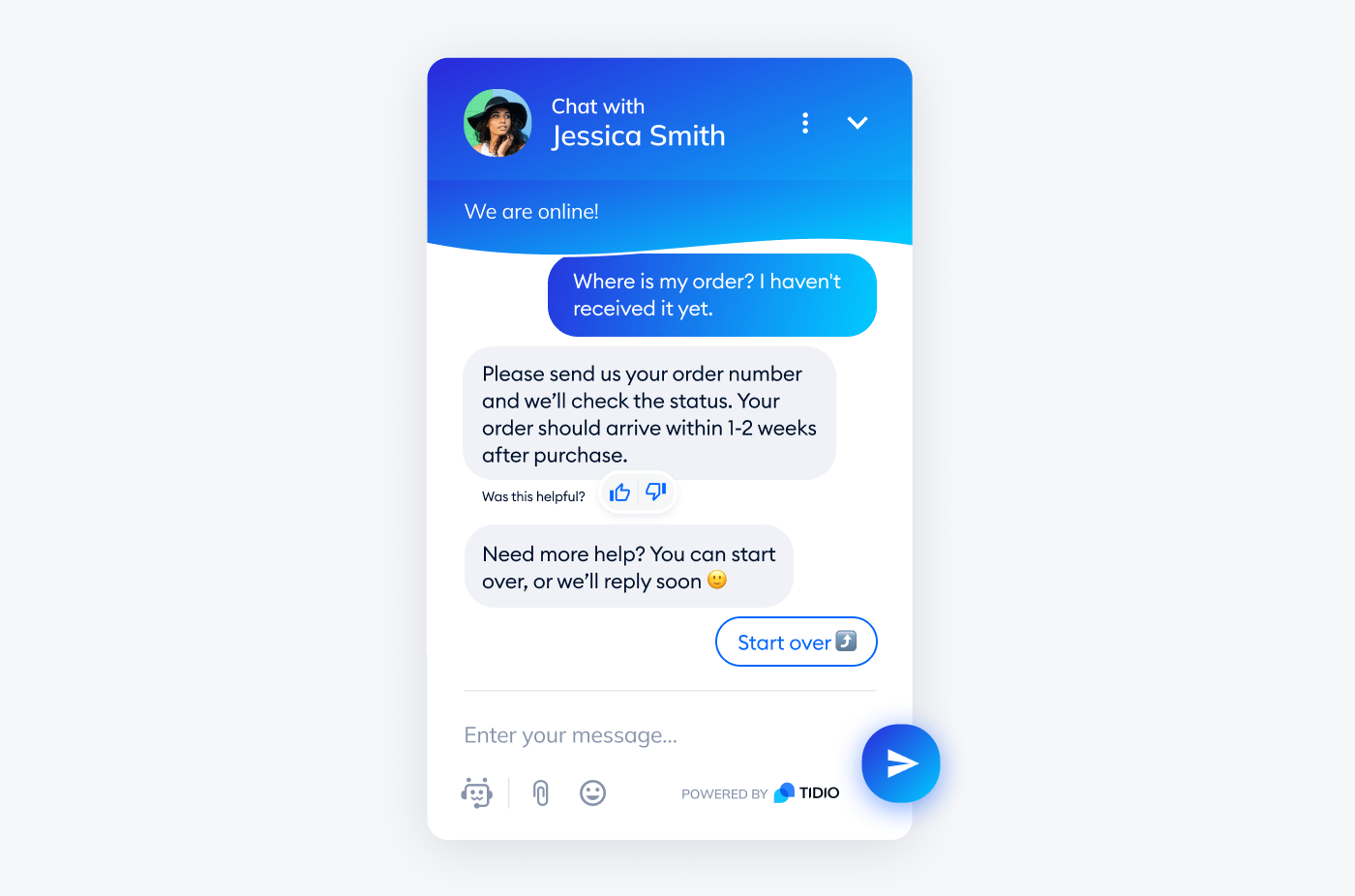
Chatbots in the ecommerce industry serve as valuable virtual assistants, providing personalized help and recommendations to customers at any time. Usually, these intelligent bots are equipped with a range of intents tailored to enhance the online shopping experience.
And so, here are the most widely used intent examples in the world of ecommerce.
- Product inquiry
| User query example: “Can you provide more details about this laptop?” |
In this example, the customer is interested in gathering more information about a specific laptop. The chatbot recognizes the intent and responds by providing detailed specifications, pricing, and availability, helping the user make an informed purchasing decision.
- Order status
| User query example: “Where is my order? I haven’t received it yet.” |
The customer wants to know the status of their order. The ecommerce chatbot identifies the intent and retrieves the order details from the database, providing real-time updates on the shipping progress and estimated delivery time, ensuring transparency and customer satisfaction.
- Return and refund
| User query example: “I received a damaged product. How can I request a refund?” |
This person has encountered an issue with a purchased item and needs assistance with returns and refunds. After recognizing this intent, the chatbot can offer guidance on initiating the return process. It can also provide instructions on packaging, shipping, and refund procedures, aiming to resolve the issue efficiently.
- Discount and promotion
| User query example: “Do you have any promotions or discounts at the moment?” |
In this example, the client wants to find out about any current discounts or offers. Once the chatbot identifies this intent, it can share information regarding ongoing sales or discount codes, encouraging the user to take advantage of the available deals.
- Size and fit assistance intent
| User query example: “Which size should I choose for this dress?” |
If this intent is set up, the bot is able to provide a size chart or measurement guidelines. It can even suggest trying a virtual fitting tool, ensuring the client makes an informed decision and avoids sizing issues.
From product recommendations and order tracking to customer inquiries, ecommerce chatbot intents can effortlessly handle a variety of tasks. The end result—a smoother and more convenient shopping experience for customers.
Customer service intents
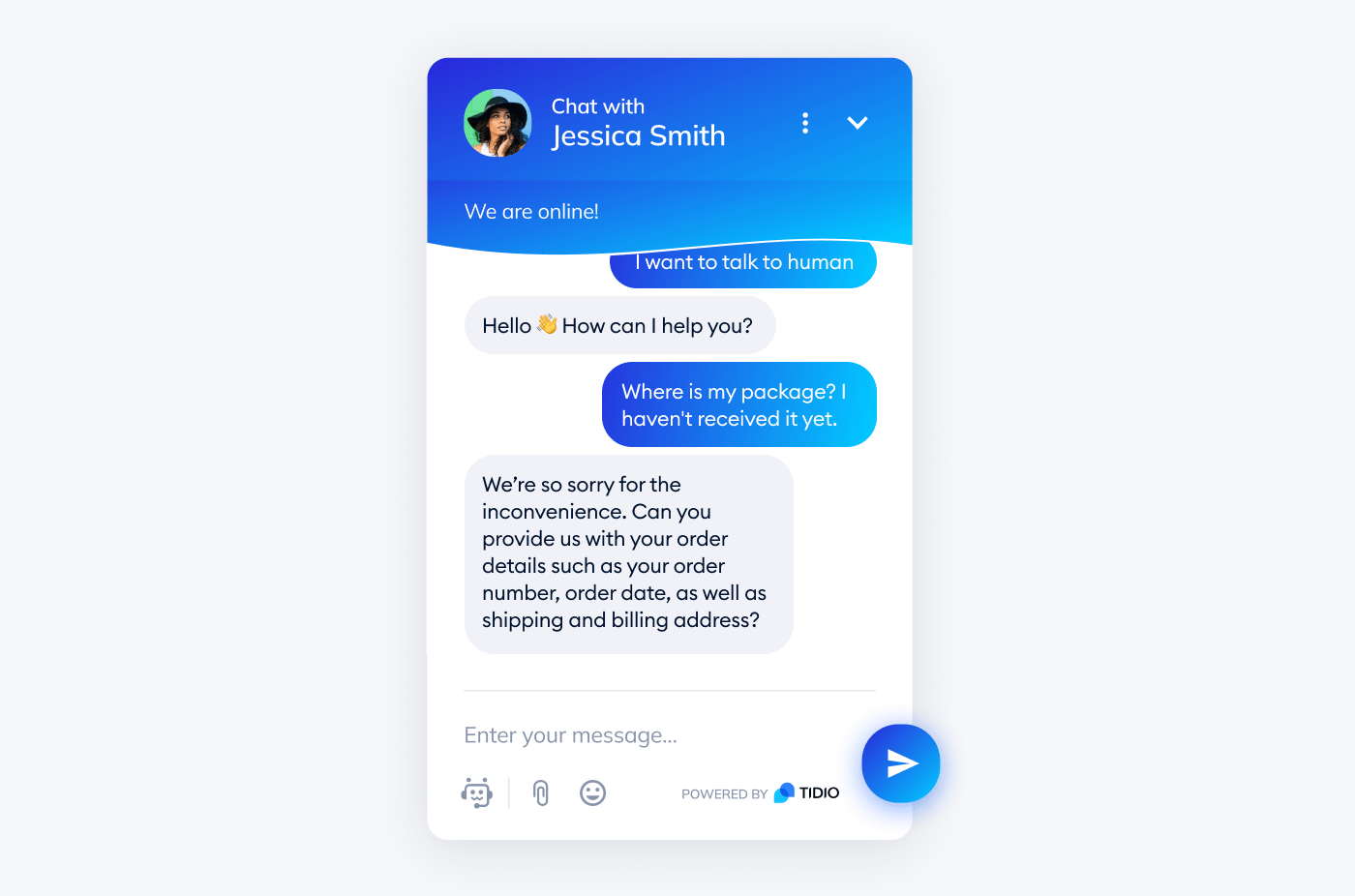
In the realm of customer service, chatbots have emerged as powerful tools, delivering efficient and personalized assistance across various industries. Equipped with specific intents, these intelligent bots can take care of many tasks. These include answering frequently asked questions, assisting with order tracking and returns, as well as providing real-time support, to ensure a seamless customer experience.
Check out some of the practical examples of intents you can find in the customer service industry.
- Password reset intent
| User query example: “How do I reset my password?” |
The intent here is simple—the customer needs assistance with resetting their password. The chatbot recognizes the intent and provides step-by-step instructions or a password reset link, helping the user regain access to their account.
- Order tracking intent
| User query example: “Where is my package? I haven’t received it yet.” |
In this example, the customer wants to track their order. After identifying the intent, the virtual assistant prompts for order details. Then, it provides real-time updates on the shipping progress and estimated delivery time, ensuring transparency and client satisfaction.
- Complaint/replacement request
| User query example: “I received a damaged product. How can I get a replacement?” |
The user has encountered an issue with a purchased item and seeks assistance for a replacement. If trained for this intent, the chatbot can offer guidance on initiating a replacement request, gathering necessary info, and providing instructions for return or exchange.
- Billing and payment/invoice intent
| User query example: “I have a question about my invoice. Can you help?” |
Simply put, this client needs clarification regarding their invoice or payment. Once the chatbot registers this intent, it can provide all the necessary info. This includes addressing the user’s billing concerns, explaining charges, and assisting with payment-related inquiries.
- Support ticket creation/troubleshooting intent
| User query example: “I’m experiencing technical issues with the app. How can I get help?” |
Here, the customer seeks technical assistance for app-related issues. The chatbot recognizes the intent and can offer guidance on troubleshooting steps. It can also create a ticket for the user, connecting the person with a human agent that can assist with their more complex queries.
All the examples above demonstrate how chatbot intents can be utilized in the customer service industry to address frequent inquiries and provide timely assistance and support. By incorporating these intents into your chatbots, you can enhance overall client satisfaction and loyalty in the long run.
Read more: Check out the reviews and examples of the best customer service chatbots out there.
Chatbot intents in the insurance industry
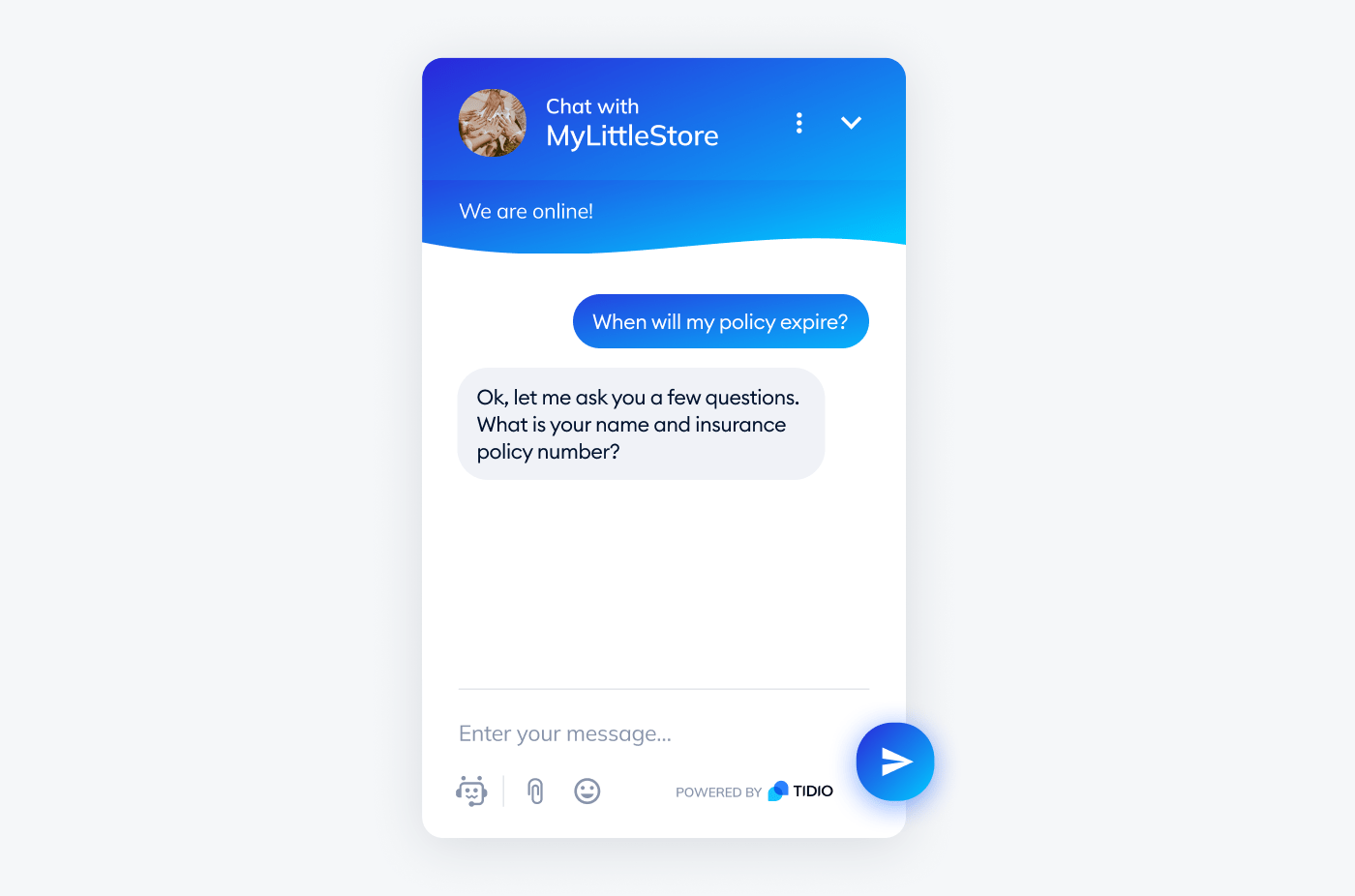
Bots can also be equipped with intents tailored to streamline insurance processes. They can help provide different policy information and coverage details to users, offer info about payments, and so on.
The following examples highlight common intents of clients that interact with insurance industry chatbots:
- Policy information and coverage
| User query example: “What does my policy cover?”/”Am I protected in case of a car accident?” |
Chatbots in the insurance industry are frequently used to provide policyholders with information about their insurance plans and coverage details. The bot can retrieve the relevant information from the insurance company’s database to answer clients’ questions. It can also offer concise explanations about the coverage, deductibles, limits, etc.
- Claims assistance
| User query example: “Which size should I choose for this dress?” |
User query: “I want to check the status of the existing insurance claim.”
Policyholders can also initiate a conversation with the chatbot to report a claim, check the status of an existing claim, or ask any related questions. The AI assistant will guide customers through the necessary steps, collect the required information, and provide instructions on submitting relevant documents. It can also give updates on the claim status and estimated timelines for resolution.
- Premium payment and renewal
| User query example: “When will my policy expire?” |
Chatbots in the insurance industry can also facilitate premium payments and policy renewals. Customers can ask these bots about premium amounts, due dates, and available payment methods. They can also request policy renewals and receive reminders when their policy is about to expire. The chatbot securely processes premium payments, provides payment confirmations, and sends policy renewal documentation. All in all, by implementing these intents into your insurance bots, you can offer convenience to your customers and enhance the overall user experience.
Banking chatbot intents
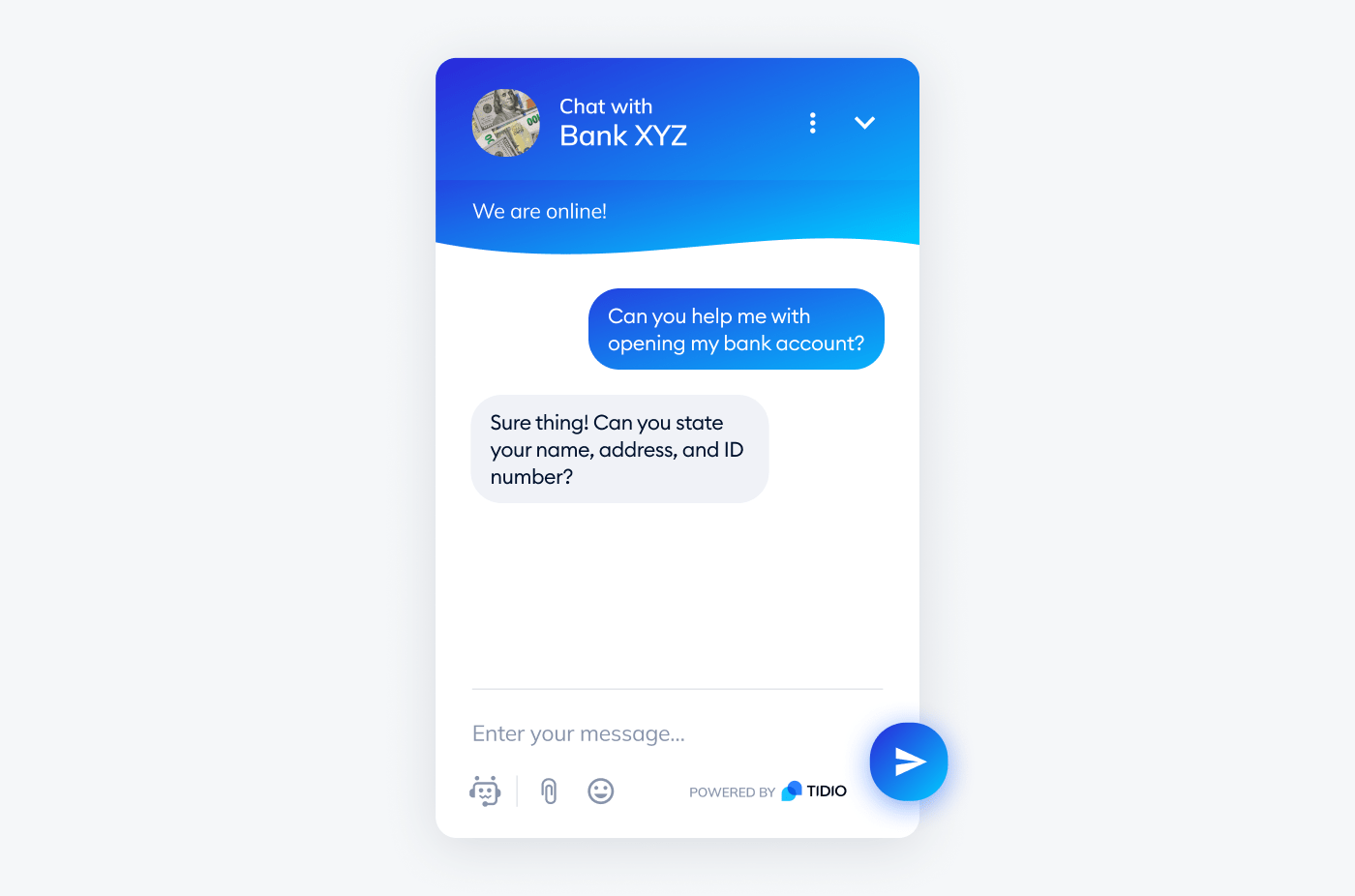
Banking industry bots are programmed with a range of intents specifically designed to enhance the banking experiences of clients.
Let’s take a look at the most commonly used chatbot intent examples in this field.
- Account opening
| User query: “Can you help me with opening my bank account?” |
With this intent, chatbots can assist customers in understanding how to open a bank account. Clients can initiate the process by providing their information, such as their name, address, and identification details, through a conversation with the chatbot. This streamlines the account opening process by eliminating the need for physical paperwork and allows users to open accounts from their preferred devices.
- Account balance inquiry
| User query example: “What’s my current account balance?” |
Customers frequently use chatbots to check how much money they have in their bank accounts. The bot can retrieve the relevant data from the bank’s system and quickly provide the customer with the most current info on their current balance.
- Transaction history
| User query example: “Can you show me my recent transactions/last X transactions on my credit card?” |
The chatbot fetches the transaction data from the relevant account and displays it to the customer, including details such as transaction dates, amounts, and merchant names. This helps customers keep track of their financial activities without the need for manual record-keeping.
- Fund transfer
| User query example: “Send $X to John Doe’s account” |
Bots in the banking industry can also enable customers to easily transfer money between accounts or to other recipients. Clients can instruct the chatbot to perform transactions from their account. The bot first verifies the necessary details, such as account numbers and transfer amounts, and then securely executes the transfer within the bank’s systems.
As you can see, banking intents allow bots to efficiently handle various tasks, providing customers with streamlined assistance.
Read more: Learn about the top finance chatbots you can use for your services.
Other bot intent types (miscellaneous industries)
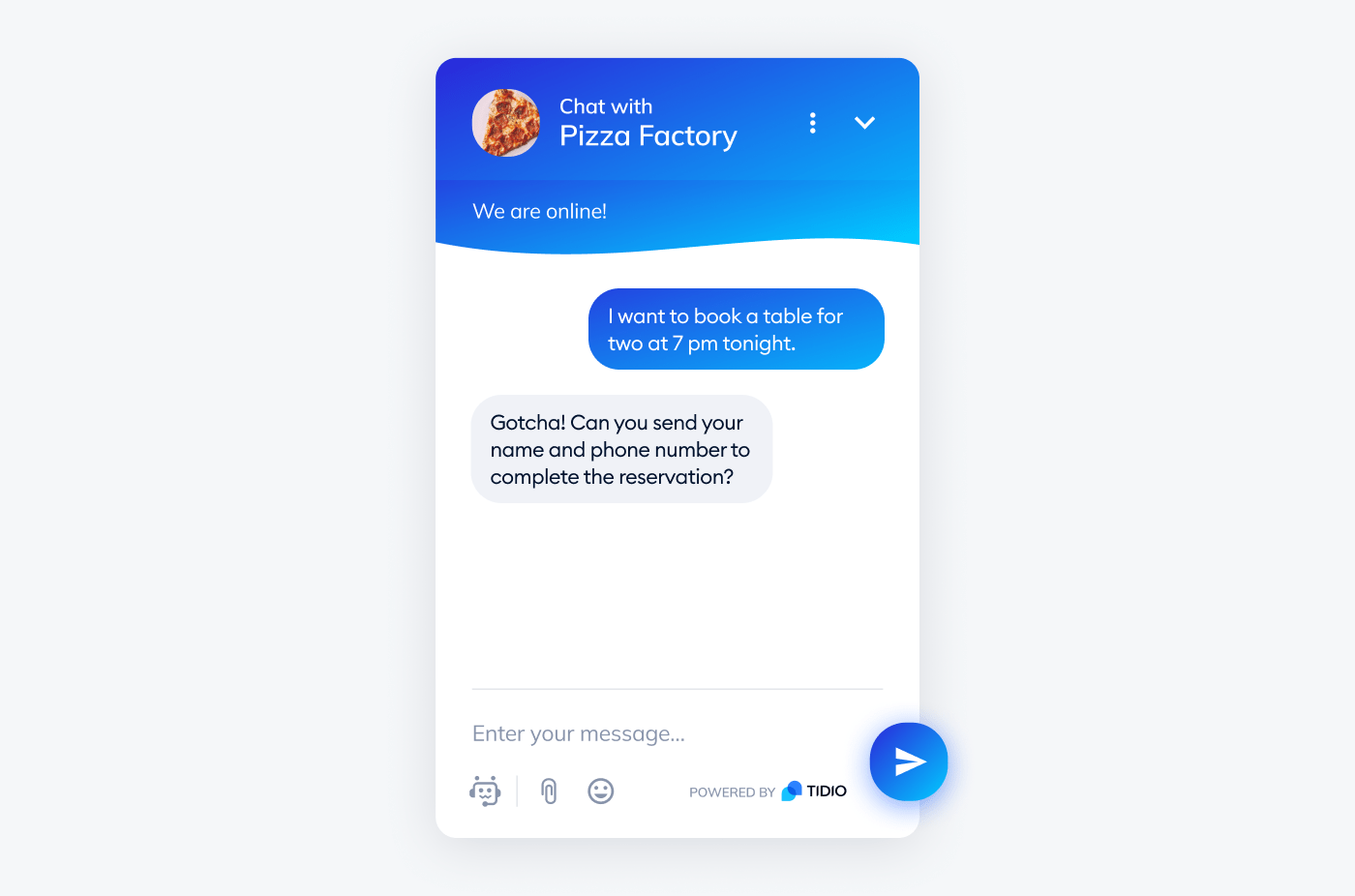
The use of chatbot intents doesn’t stop at customer service and ecommerce sectors. These virtual assistants can be designed with all sorts of intents in mind that cater to the most diverse industry needs.
Therefore, we’ve also decided to gather intent examples suitable across various other industries, like hospitality, real estate, and healthcare, to name just a few.
Let’s check them out.
- Booking/reservation intent (hospitality)
| User query: “I want to book a table for two at 7 pm tonight.” |
The user wishes to make a reservation for a table. The chatbot identifies the intent and proceeds to collect the necessary details like the number of guests, preferred time, and date, facilitating a seamless reservation process.
- Recommendation intent: (hospitality)
| User query: “Can you suggest some popular restaurants in this area?” |
Here, the client is looking for popular restaurants in a specific area. The restaurant chatbot recognizes the recommendation intent and provides a list of best-rated wining and dining places in the requested location, helping the user make informed choices.
- Flight booking (travel)
| User query: “I need to book a flight from New York to London on July 10th.” |
In this example, the customer wants to book a flight for a specific date and route. Once it identifies the intent, the chatbot assists the user in finding available flights and facilitating the booking process.
- Appointment scheduling (healthcare)
| User query: “I would like to schedule a dental appointment for next week.” |
Just as the message suggests, this intent is simple—the user wants to book a dental appointment. The chatbot guides them through the scheduling process, offering available time slots and helping them secure an appointment with the practitioner.
- Hotel reservation (hospitality)
| User query: “I need to book a hotel room for two nights in Paris.” |
After recognizing the hotel reservation intent made by the user, the bot finds suitable hotel options in Paris. It then displays available rooms and rates, facilitating the booking process for the customer and streamlining the service in general.
- FAQ/store hours (miscellaneous)
| User query: “What are your working hours?” |
Here, the customer wants to learn about the store’s operating hours. The chatbot then provides a response with accurate info, helping them quickly find the desired information. In turn, it helps improve client experience and reduces the need for agents to reply to the most commonly asked questions.
Read more: Explore the best FAQ chatbot types and find out key things to consider when choosing one for your needs.
And there you have it—some of the most practical examples of intents that can be implemented across different industry sectors to improve client experiences.
But how do you train your chatbot in order to benefit from these intents in the first place?
Let’s take a closer look.
Steps for chatbot intent training
Intent training during your chatbot development is crucial for ensuring accurate and responsive interactions with users. By incorporating certain strategies, developers and business owners can enhance the ability of their virtual assistants to understand and address different user requests.
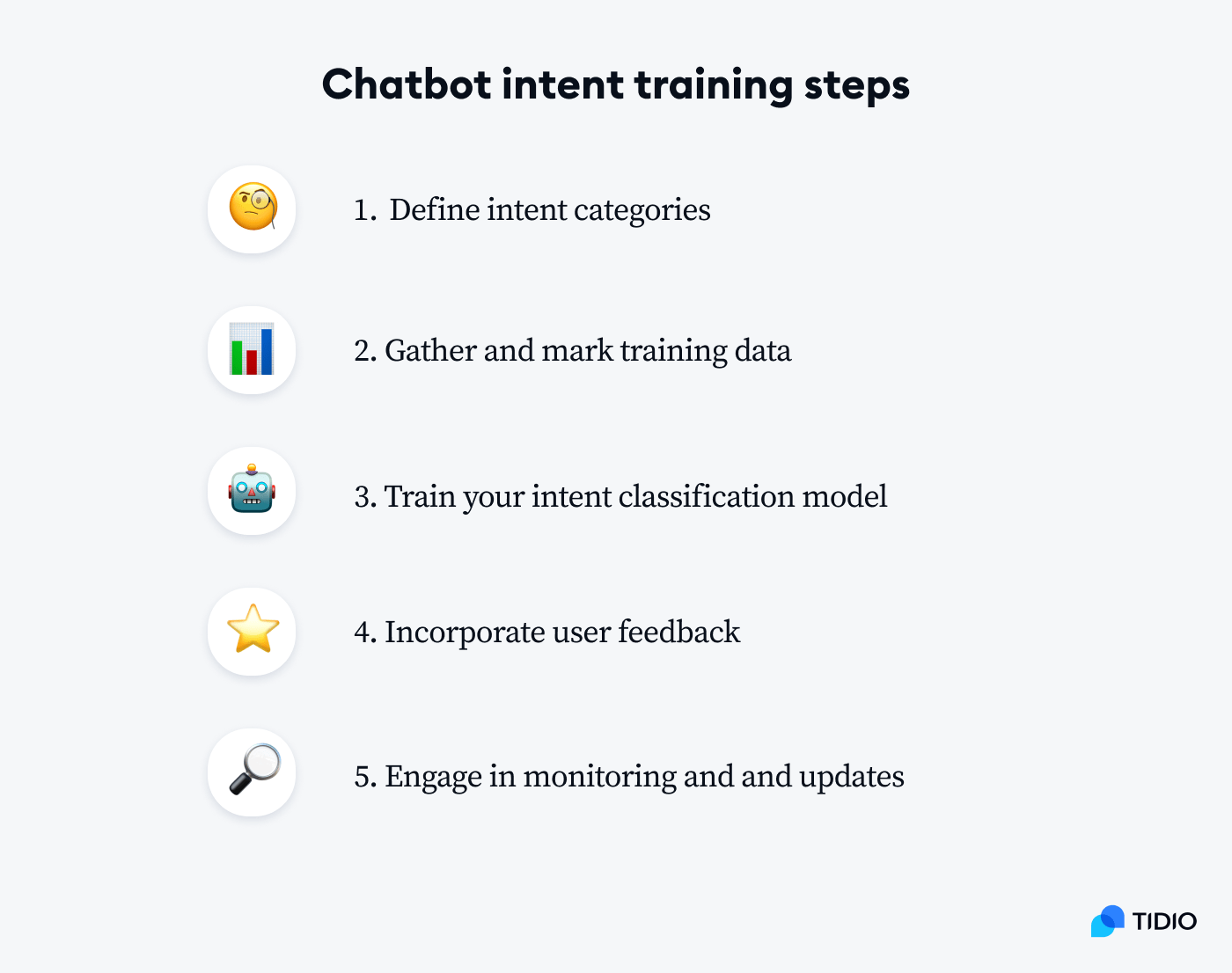
Without further ado, here is a list of useful tips you can implement for successful chatbot intent training.
1. Define clear intent categories
Start by clearly identifying the intent categories that align with your chatbot’s purpose and the client’s needs. Detect the common goals or actions clients are likely to have, and then, you can create distinct intent categories for each. To identify these categories, you can look through your chat logs and examine previous repetitive client questions. Last but not least, you should speak to your support team for further insights.
Say that you use a customer support chatbot in your ecommerce store. In this case, you might want to define intent categories like “Order Status”, “Product Inquiry”, “Return/Refund Assistance”, and “Shipping Policy”. Each category represents a specific purpose users might have when interacting with the bot.
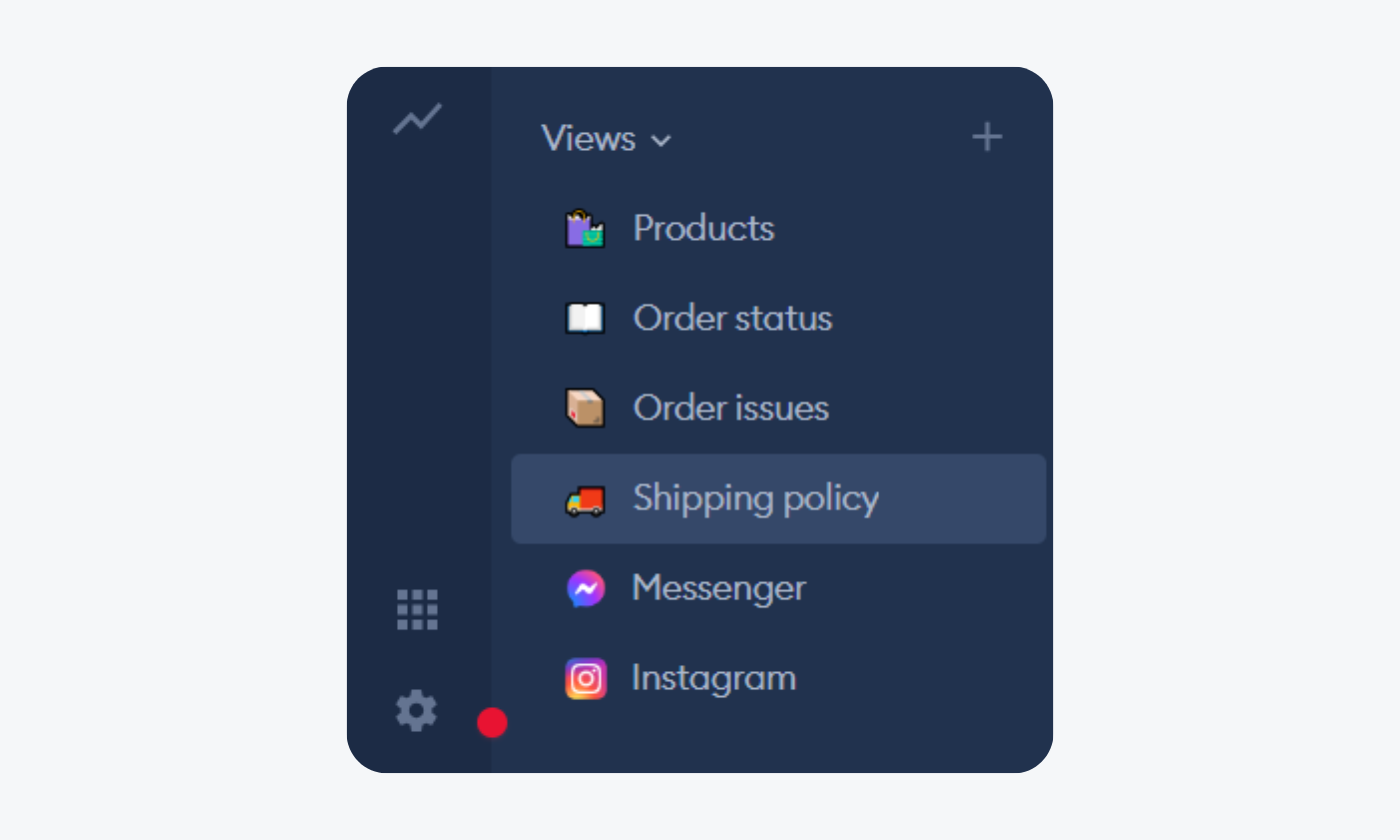
In Tidio, there’s a possibility of using smart Conversations Views that enable automated (AI) intent detection depending on the conversation’s topic. To add more intents, simply click on the + icon located right above the Views menu in your inbox.
Then, you can enter the name of the view that will appear in the Views menu and select the topic to create new intent. Finally, hit the Create button.
2. Collect and mark training data
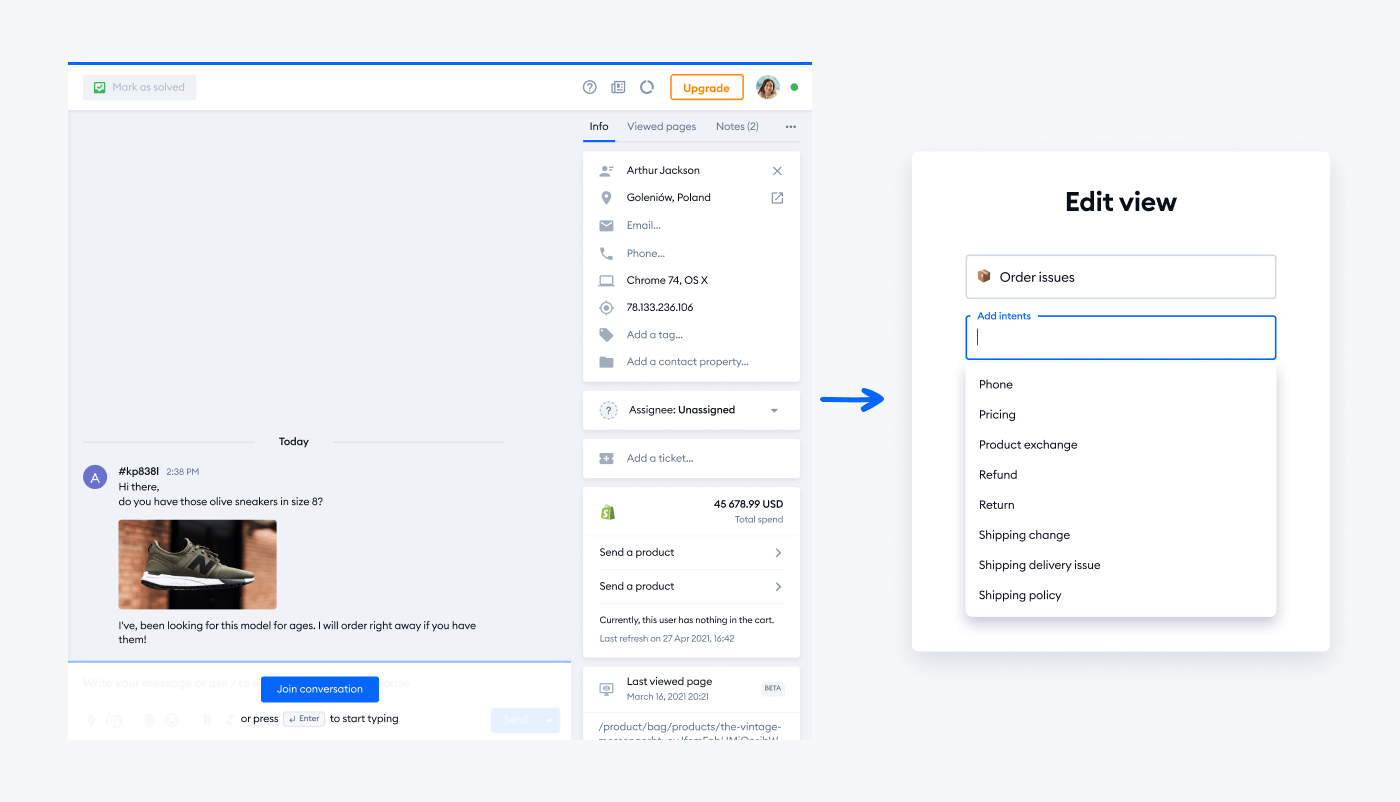
This step requires you to gather a diverse dataset of client messages and mark them with the corresponding labels. Also, ensure that the chatbot intent dataset covers a wide range of user queries and accurately represents the intents you want your bot to recognize.
For instance, you can collect queries like “Where is my order?”, “Can I return this item?”, or “Tell me more about product X.” Then, you can annotate these messages with the appropriate intent label, such as “Order Status”, “Return/Refund”, or “Product Inquiry”.
In Tidio, you can also use the Views feature to add multiple intents to the same view. For example, if you determine that certain messages should be classified with the Shipping Policy label, you can use the Edit button to add multiple intents to this category.
These can be intents such as Shipping price, Shipping change, and so on.
Read more: Check out our knowledge base and learn how to use Tidio’s One Inbox to manage all conversations, views, and intents in one place.
3. Train an intent classification model
Utilize machine learning (ML), natural understanding (NLU), and natural language processing (NPL) techniques to train an intent classification model. Usually, you have to optimize algorithms to process the marked training data and build a model that can learn to identify intents based on input messages. By doing so, your model will be able to identify patterns and associations between user queries and their respective intent labels.
With Tidio’s Lyro, however, you don’t have to train a chatbot—providing an FAQ from your website is all you have to do for your intent model to be set.
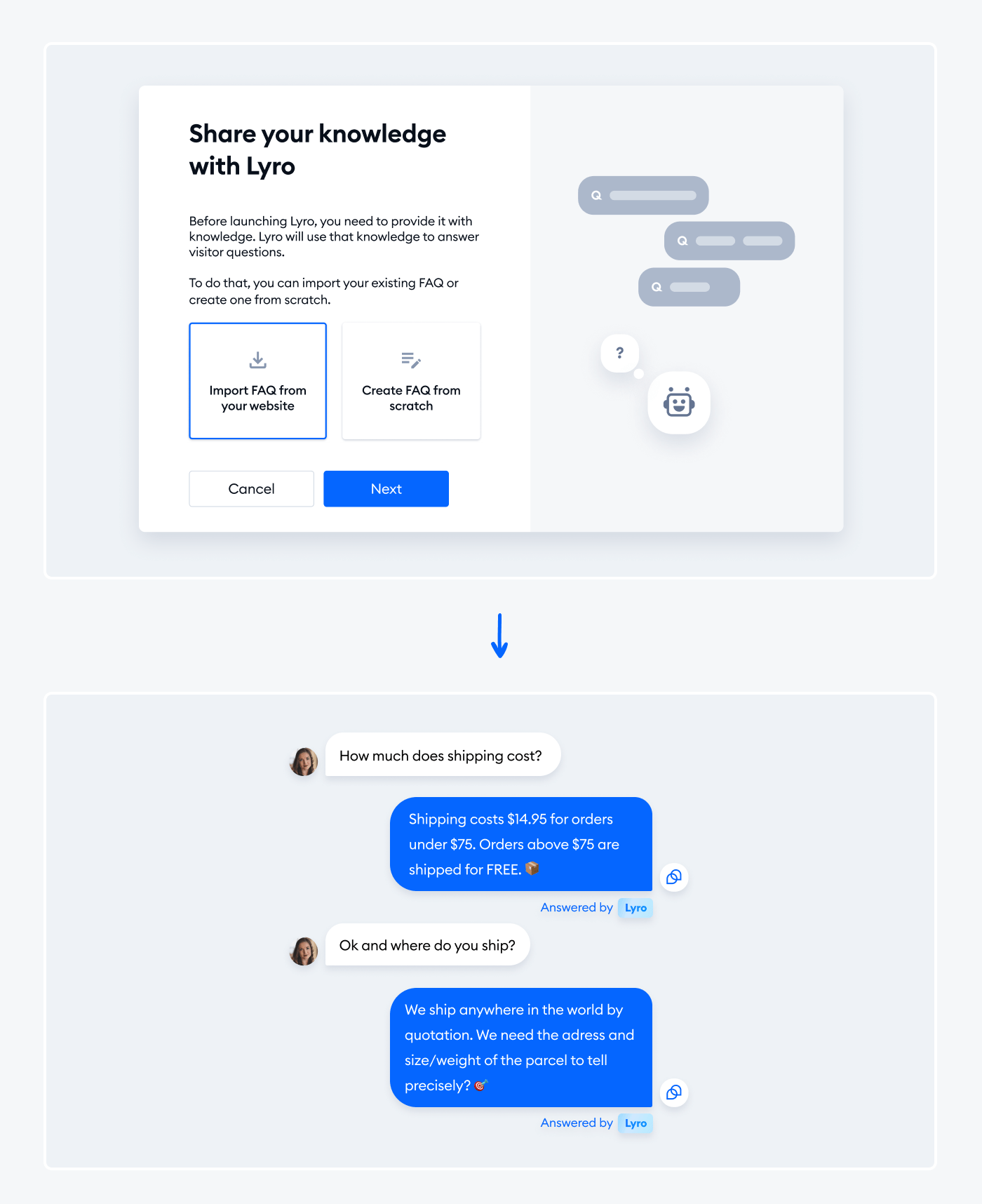
Tidio’s Lyro is a great example of an intelligent AI assistant capable of using the above-mentioned advanced techniques for intent classification. This conversational bot is trained to understand the context and remember previous replies. As such, it can provide accurate answers to customer queries in a natural language, respond to follow-up questions, and seamlessly continue the conversation.
Read more: Check out the Lyro case study and find out how this powerful AI successfully automated Tidio’s customer support processes.
Use the power of conversational AI to boost client satisfaction
4. Incorporate user feedback
Customer feedback is vital in improving the intent recognition capabilities of your virtual agent. Therefore, you should continuously collect and analyze ratings and reviews provided by clients to identify any misclassifications or new intents the chatbot may encounter.
You can then incorporate these new objectives into your training process to refine and update the classification model. By using this approach, you will improve the chatbot’s natural conversational flow and adapt it to user needs over time.
You can do this by simply activating a chatbot functionality that will ask a customer to leave their opinion after interacting with the bot.
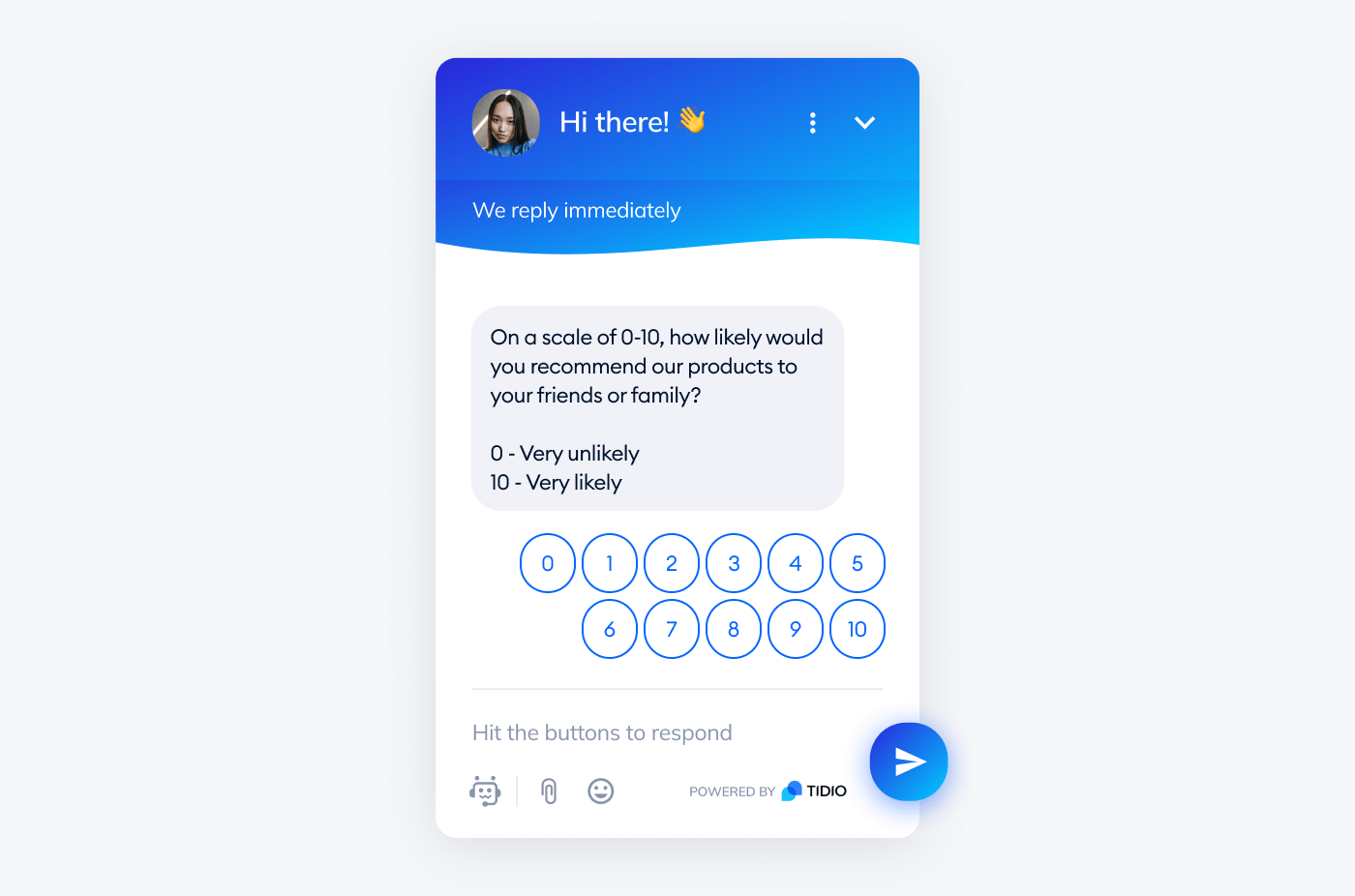
Read more: Check out the best flowchart and decision tree examples and learn how to build chatbots that will help your business grow.
5. Engage in continuous monitoring and updates
Last but not least, don’t forget to regularly monitor the chatbot’s performance in recognizing intents in real-world scenarios. Identify any emerging patterns or changes in user behavior that may require updating or adding new intents.
You can do this by regularly checking relevant chatbot analytics and dashboards. Some of the key metrics you should monitor include message click-through rate, percentage of users interacting with the bot, and customer satisfaction score.
Let’s say you’ve got accurate intents set in place for pricing, order, and shipping info. But still, more and more people are complaining about the shipping speed and order difficulties. This indicates you need to work on classifying intents for these specific issues.
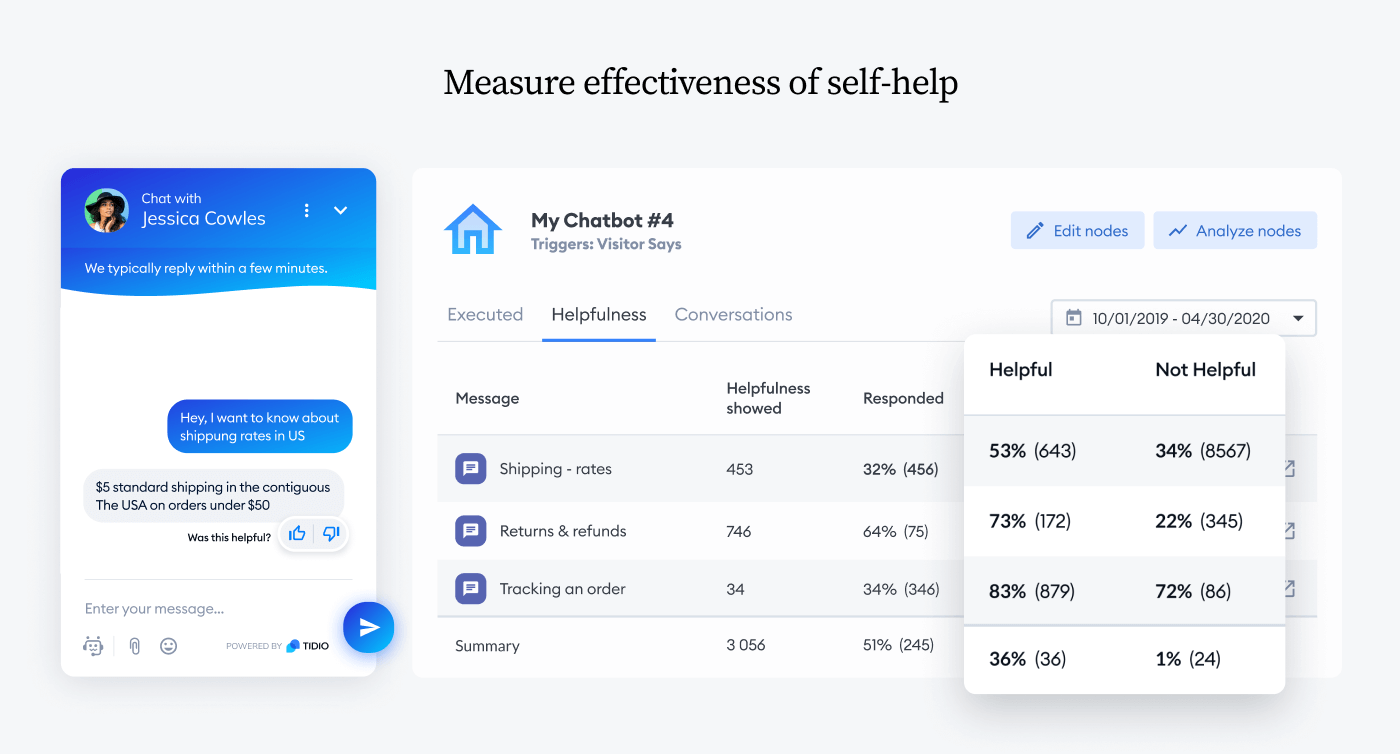
In that case, you should stay attentive to what customers are saying and continuously update and retrain your model to maintain its accuracy and provide the most precise info possible.
In short, following these practical steps can only result in a more helpful interaction with users.
Chatbot intents: key takeaway
Utilizing chatbot intents is essential for creating effective and personalized interactions. If you properly categorize these intents, your intelligent virtual assistants can provide clients with accurate and relevant responses that enhance customer satisfaction in the process.
Once again, here are the key intent types tailored to address specific client needs in different industries:
- Informational
- Transactional
- Navigational
- Support
- Feedback
- Small talk
Finally, for effective training, you should define categories for accurate chatbot intent detection, provide diverse training data, and refine the bot’s understanding through feedback loops. These steps will help you ensure an accurate interpretation of user intents and create smooth conversational experiences.

